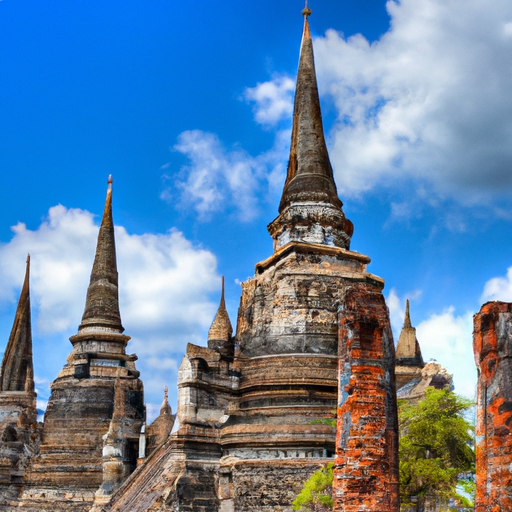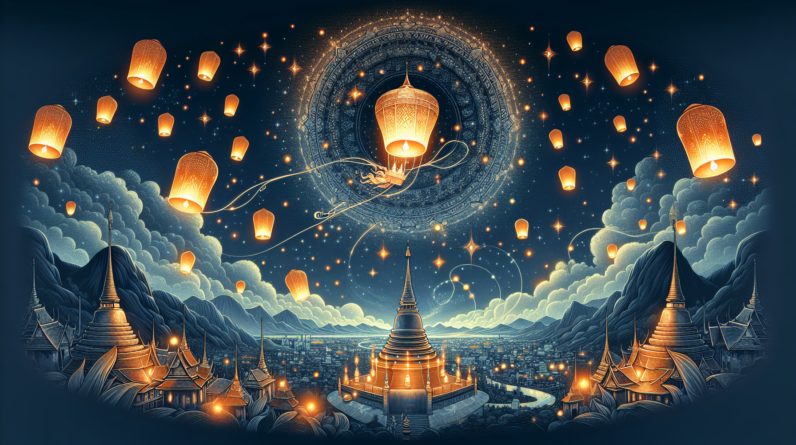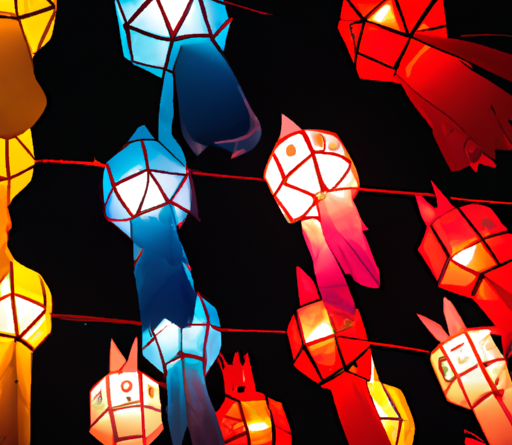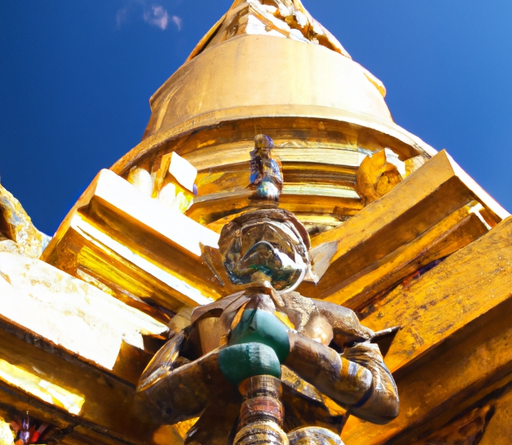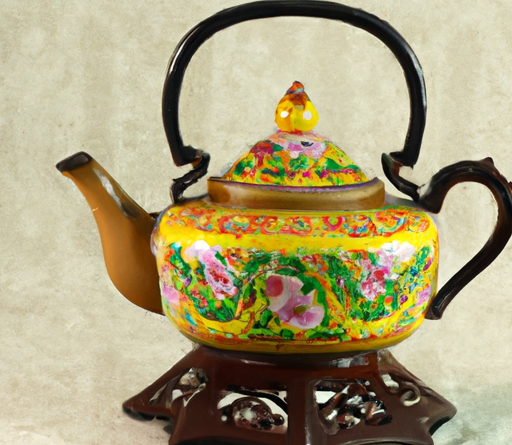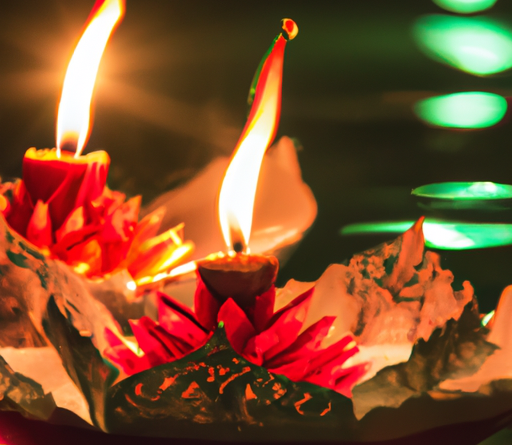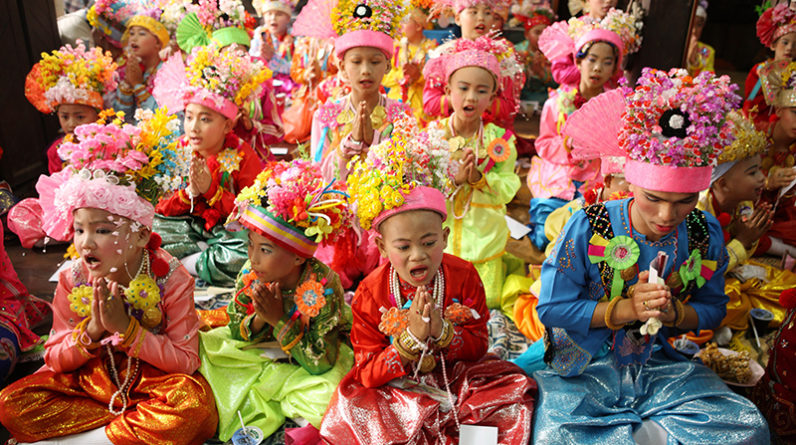
So you want to discover what it’s like to truly immerse yourself in Thai culture and traditions? Well, you’re in the right place! In this article, we’ll delve into the wonderful world of living like a local in Thailand. From trying delicious street food to participating in traditional festivals, we’ll guide you on a journey that will leave you with a deeper understanding and appreciation of Thai culture.
Curious to learn more? Stick around and we’ll share tips on finding authentic local experiences, whether it’s exploring off-the-beaten-path neighborhoods, learning traditional crafts, or participating in religious ceremonies. Don’t worry if you’re not familiar with Thai customs or the language, we’ve got you covered! By the end of this article, you’ll feel like a true local, ready to embrace the rich tapestry of Thai culture. So, let’s begin our adventure together and immerse ourselves in the vibrant world of Thai traditions!
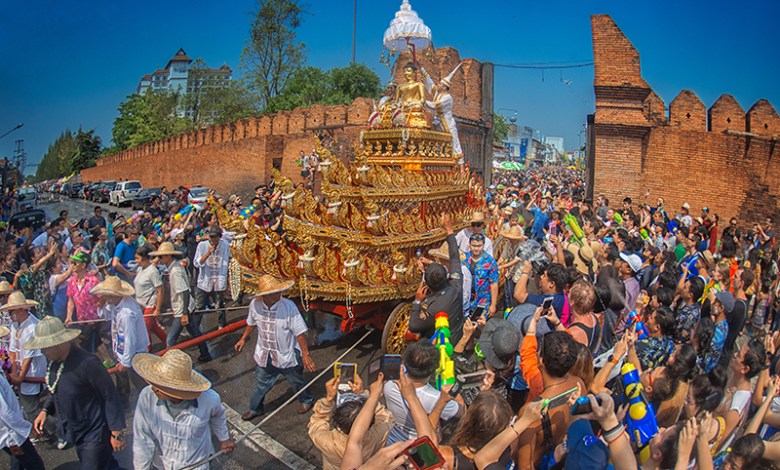
This image is property of i0.wp.com.
Introduction
If you are planning a trip to Thailand or simply want to learn more about the country’s rich cultural heritage, then this article is for you. Living like a local means immersing yourself in Thai culture and traditions, gaining a deeper understanding of the customs and way of life in this beautiful Southeast Asian country. From exploring the importance of Thai culture to indulging in traditional cuisine and participating in lively festivals, there are countless opportunities to experience the true essence of Thailand.
Understanding Thai Culture and Traditions
The Importance of Thai Culture
Thai culture is deeply rooted in history and plays a significant role in the daily lives of the people. Respect for elders, the concept of “kreng jai” (consideration for others), and the importance of family are some of the fundamental aspects of Thai culture. Thais take pride in their cultural heritage and strive to preserve and promote it, making it an integral part of their daily interactions and traditions.
The Influence of Buddhism
Buddhism is the predominant religion in Thailand and has a profound influence on Thai culture and traditions. It shapes the moral and ethical values of the people, emphasizing compassion, harmony, and mindfulness. Temples, or “wats,” can be found throughout the country, serving as spiritual centers and important cultural landmarks. Paying a visit to these sacred places can provide valuable insight into the religious beliefs that guide the lives of the Thai people.
Key Cultural Values and Beliefs
Thai culture is characterized by a set of values and beliefs that are deeply ingrained in society. “Sanuk,” the pursuit of fun and enjoyment, is highly valued, as Thais believe in living life to the fullest. “Saving face” is another important concept; Thais tend to avoid confrontation and maintain a harmonious relationship with others. Hospitality and generosity are also central to Thai culture, as the Thai people are known for their warm smiles and welcoming nature.
Thai Traditional Clothing and Fashion
Traditional Thai Outfits
Thai traditional clothing reflects the rich cultural heritage of the country. The most well-known traditional attire for women is the “chut thai,” which consists of a “sabai” (a long-length shawl) and a “sin” (a wrap-around skirt). Men often wear the “chong kraben” (a type of sarong) combined with a “chabang” (a wrap-around jacket). These traditional outfits can still be seen during special occasions or cultural events, impressively showcasing the intricate designs and vibrant colors that Thai fashion has to offer.
Significance of Accessories
Accessories play a vital role in Thai traditional outfits. Women often wear intricate jewelry pieces, such as necklaces, earrings, and bangles, which are handcrafted with meticulous detail. The choice of accessories can indicate the wearer’s social status and enhance the overall elegance of the outfit. For men, traditional accessories like belts and headdresses add a touch of sophistication to their attire.
Thai Fashion Influences
Thai fashion has evolved over time, incorporating modern elements while still staying true to its traditional roots. Famous Thai designers have gained recognition both locally and internationally, showcasing their unique blend of traditional and contemporary designs. From elaborate evening gowns to casual streetwear, Thai fashion is diverse and has something to offer for every style preference.
Traditional Thai Cuisine
Distinctive Thai Flavors
Thai cuisine is renowned for its bold flavors and unique combinations of sweet, sour, salty, and spicy tastes. The use of fresh herbs and spices, such as lemongrass, basil, chili, and lime, adds an aromatic and vibrant touch to many Thai dishes. Whether it’s the famous green curry or the tangy som tam (papaya salad), each mouthful is a sensory delight that reflects the rich culinary traditions of Thailand.
Key Ingredients and Cooking Techniques
Thai cuisine relies heavily on staple ingredients like rice, noodles, fish sauce, and coconut milk. Stir-frying, grilling, and steaming are commonly used cooking techniques that help preserve the natural flavors and textures of the ingredients. The artful presentation of food is also significant in Thai cuisine, as the combination of colors and textures adds to the overall dining experience.
Famous Thai Dishes
No exploration of Thai cuisine would be complete without mentioning some of the most famous dishes. Pad Thai, a stir-fried noodle dish, is a popular favorite among locals and visitors alike. Tom Yum Goong, a spicy and sour soup with shrimp, is another iconic dish that showcases the distinct flavors of Thai cuisine. Other must-try dishes include green curry, mango sticky rice, and massaman curry, each offering a unique taste of Thailand’s culinary heritage.
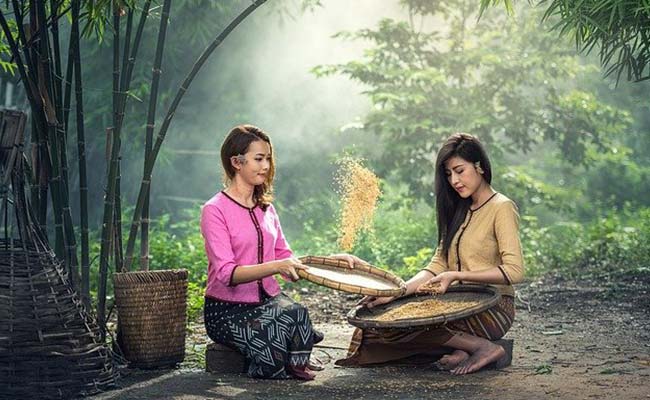
This image is property of www.thethailandlife.com.
Festivals and Celebrations in Thailand
Thai New Year: Songkran
Songkran, also known as the Thai New Year, is one of the most celebrated festivals in Thailand. Held in mid-April, the festival is known for its iconic water fights, symbolizing the washing away of bad luck and starting anew. People come together to splash water on each other, participate in traditional rituals, and pay respects to their elders. Songkran is a joyful time to experience Thai culture, celebrate with locals, and embrace the spirit of renewal.
Loy Krathong Festival
The Loy Krathong Festival, usually held in November, is a time when Thais pay homage to the goddess of water, Phra Mae Khongkha. During this festival, colorful floats made of banana leaves, flowers, and candles are floated on rivers and lakes, symbolizing the release of worries and negativities. Loy Krathong is a magical experience that allows visitors to immerse themselves in the beauty of Thai traditions while expressing gratitude for nature and the water that sustains life.
Phi Ta Khon: Ghost Festival
Phi Ta Khon, also known as the Ghost Festival, takes place in the Dan Sai district of Loei Province. This unique festival involves vibrant parades with locals donning elaborate ghost masks and colorful costumes. The festival is considered a merit-making event, where participants perform traditional dances and engage in religious ceremonies. Phi Ta Khon offers a glimpse into the spiritual beliefs and folk traditions of the region, making it a fascinating cultural experience for visitors.
Thai Language and Communication
Basic Thai Greetings and Phrases
Learning a few basic Thai greetings and phrases can go a long way in engaging with the local community and showing respect for Thai customs. “Sawatdee” is a common greeting used to say hello, while “khop kun” means thank you. Thai people appreciate when visitors make an effort to learn and use these simple phrases, creating a friendly and welcoming atmosphere.
Polite Behavior and Customs
Politeness and respect are highly valued in Thai culture. Thais often use the word “ka” or “krub” to demonstrate politeness when speaking to others. Additionally, it is customary to remove your shoes before entering someone’s home or a temple. Being mindful of these cultural customs helps foster positive interactions and a deeper understanding of Thai traditions.
Non-Verbal Communication
Non-verbal communication plays a significant role in Thai culture. The traditional “wai” gesture, where palms are pressed together in front of the chest, is used as a polite way to greet others and show respect. The level at which the palms are held signifies the degree of respect, with a higher “wai” being reserved for elders or people of higher social status. Observing and reciprocating these non-verbal cues can help forge connections and ensure positive interactions with the locals.
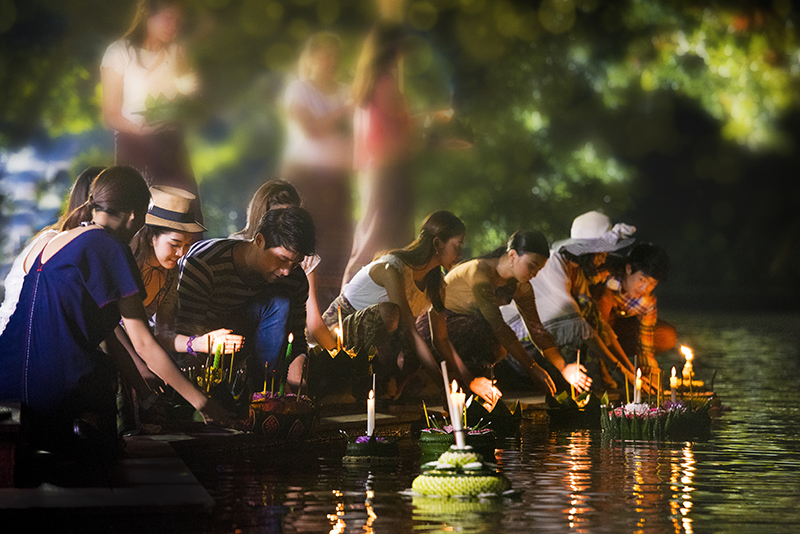
This image is property of i0.wp.com.
Exploring Thai Arts and Crafts
Thai Traditional Dance and Theatre
Thai traditional dance and theatre are highly regarded art forms that have been passed down through generations. The graceful movements, intricate costumes, and storytelling elements make these performances captivating and immersive. Whether it’s the elegant Khon dance or the expressive Lakhon dance, experiencing Thai traditional dance and theatre offers a glimpse into the rich cultural heritage of the country.
Thai Silk and Textiles
Thailand is renowned for its exquisite silk and textile industry. Beautifully crafted silk garments and accessories, often adorned with intricate patterns and designs, are highly sought after. The intricate process of silk production and weaving is a testament to the craftsmanship and attention to detail that goes into every piece. Exploring the world of Thai silk and textiles is a fascinating way to appreciate the artistry and heritage behind these timeless creations.
Thai Pottery and Sculptures
Thai pottery and sculptures are another facet of Thai arts and crafts that deserve exploration. From intricately carved statues depicting traditional deities to functional pottery pieces, each creation showcases the mastery and creativity of Thai artisans. Visiting pottery workshops or art galleries can provide insights into the techniques used and the stories behind these remarkable works of art.
Daily Life and Etiquette in Thailand
Thai Home and Family Life
Family is at the heart of Thai society, and Thai homes typically reflect this sense of close-knit kinship. Traditional wooden houses on stilts, adorned with intricate carvings and surrounded by lush gardens, are a common sight in rural areas. Thai families often gather around meals, sharing delicious dishes and engaging in lively conversations. Experiencing the warmth and hospitality of a Thai home can provide a glimpse into the daily life and cherished traditions of the people.
Common Social Etiquette
Politeness and respect for others are important aspects of Thai social etiquette. The concept of “greng jai” encourages individuals to be considerate and avoid causing inconvenience or embarrassment to others. It is also customary to avoid touching someone’s head, as it is considered a sacred part of the body. By observing and following these social etiquettes, visitors can navigate social interactions with ease and show appreciation for Thai customs.
Respecting Thai Customs
Respecting Thai customs and traditions is essential when living like a local. Whether it’s participating in religious ceremonies, adhering to dress codes at temples, or being mindful of cultural practices, embracing and respecting Thai customs is a way to fully experience the rich tapestry of Thai culture. Thai people appreciate when visitors show interest in and respect for their heritage, fostering a deeper connection and understanding.

This image is property of img.theculturetrip.com.
Traditional Thai Medicine and Wellness
Thai Massage and Herbal Medicine
Traditional Thai massage is an ancient healing art that combines acupressure, stretching, and meditation techniques. It is believed to restore balance and promote overall well-being. Thai massage practitioners undergo rigorous training and have a deep understanding of the body’s energy pathways. Additionally, Thai herbal medicine, which utilizes natural remedies derived from plants, is another traditional practice that has been passed down through generations. Experiencing Thai massage and exploring the healing properties of Thai herbal medicine can be a rejuvenating and enlightening experience.
Holistic Healing Practices
Thailand offers a wide range of holistic healing practices for those seeking physical and spiritual wellness. Meditation retreats, yoga centers, and traditional healing therapies like Reiki and Ayurveda are readily available throughout the country. These practices provide an opportunity to immerse oneself in a journey of self-discovery and personal growth while embracing the holistic approach to well-being.
Wellness Retreats in Thailand
Thailand has become a popular destination for wellness retreats, offering a variety of programs that cater to individual needs. From detox programs and spa treatments to yoga retreats and meditation camps, there are countless options available for those looking to rejuvenate their mind, body, and spirit. Combining the tranquility of Thailand’s natural landscapes with the ancient practices of Thai wellness traditions, these retreats provide an ideal setting for self-care and inner exploration.
Conclusion
Living like a local and experiencing Thai culture and traditions is an enriching journey that allows you to immerse yourself in the vibrant tapestry of Thai heritage. From exploring the significance of Thai culture and traditions to indulging in the distinct flavors of Thai cuisine and participating in lively festivals, Thailand offers a multitude of opportunities to connect with the local community and gain a deeper understanding of the country’s unique way of life. Embark on this remarkable adventure, and let Thailand captivate you with its rich cultural heritage and warm hospitality.
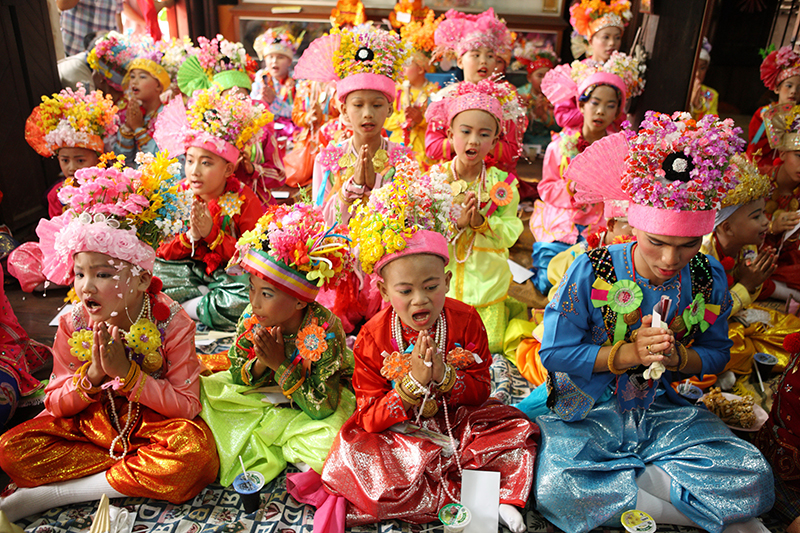
This image is property of i0.wp.com.
